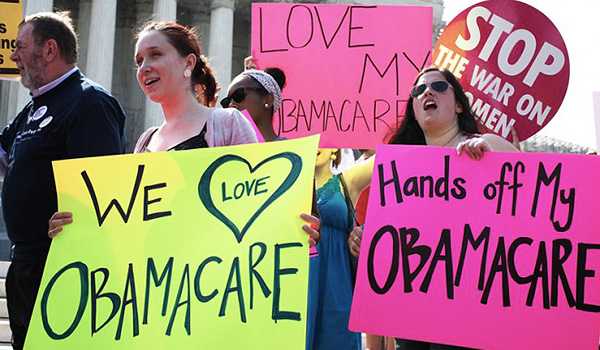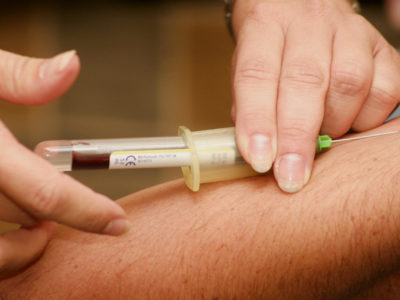The president Trump has been applying pressure to Republicans to get rid of Obamacare. The Patient Protection and Affordable Care Act, known as Obamacare, is the largest overhaul of the US healthcare system since the 1960s. The Trump’s bill would also make cuts to Medicaid, the health-insurance program for the poor. Under the Senate Republican health care bill, 22 million fewer Americans would have health insurance in 2026, compared with Obamacare, according to new estimates from the Congressional Budget Office.
Obamacare (ACA) allow health insurance coverage to the US population who lack it, people that receive no coverage from their employers and are not covered by health programmes. Obamacare is made for to reduce the cost of insurance because offers governative subsidies and it make coverage more affordable. In addition, the law bans insurance companies from denying health coverage to people with pre-existing health conditions. However the principal problems with this law are that the federal government should have provided the states more funding for Medicaid expansion and that fewer Americans than anticipated are signing up and that in turn raises insurances costs for everyone, which then further drives down participation. Unfortunately the prediction is premiums are to rise by an average of 25% in 2017.

Republicans’ propaganda against Obamacare
The US, the only industrialized nation without universal health coverage, have the highest health-care spending in the world and the highest levels of government spending on health care per person. Healthcare in the U.S. costs about twice as much as it does in any other developed country. The quality of the USA’s healthcare ranks last among the top eleven richest countries. The World Health Organization ranked the U.S. thirty-seventh in healthcare systems, and The Commonwealth Fund placed the U.S. last among the top 11 industrialized countries in overall healthcare. The United States fared especially badly on measures of affordability, access, health outcomes, and equality between the rich and poor. The United States had high rates of infant mortality and a low life expectancy at 60 years. However, we must also consider that in America does perform well in end-of-life care, and survival rates after major issues like breast cancer or strokes.
In U.S. the administrative costs are enormous. About one quarter of healthcare cost is associated with administration, which is far higher than in any other country. The U.S. has an high expensive of services, in particular high-tech screenings and specialists instruments. Another major difference in health costs between the U.S. and every other developed nation is the cost of drugs. In most countries the government negotiates drug prices with the pharmaceutical companies. About this in U.S. it is not possible because the enormous power and influence of of insurance companies. In addition, the cost of american defensive medicine is $650 billion annually. U.S. medical practitioners tend to use a more expensive mix of treatments to feel safe. Compared with other developed countries the U.S. performs more than twice as many MRI scans and three times as many mammograms.
In developed countries, government typically pays for about 75% of medical care. Before ACA, the U.S. covered less than half of health expenditure, and legislation prevented the Government from exercising a bargaining power. All of this has allowed insurance, healt and pharmaceutical companies to come out stronger. Canadians, Germans and the French spend no more than half of what Americans do out of pocket on healthcare in a year. In countries, such as the United Kingdom, where health care is covered by the government, officials can negotiate the best prices for consumer, bringing down overall costs. In the Netherlands, like the USA, the health services is covered by insurance. But the insurance is considered a social service, and it’s much more heavily regulated than in the United States. People are required to buy insurance, just like under Obamacare, but so less than 1 percent of the population is uninsured. Premiums are funded in part through payroll taxes and in part through subsidies that much of the population receives. Dutch people all pay a deductible of around $500, and unlike in the United States, providers there aren’t allowed to balance bill if insurance doesn’t fully cover their services. The Dutch government doesn’t allow insurers to pick only the healthiest customers to insure, it redistributes the risk among insurers by making those with healthier risk pools pay into a pot of money that other, less fortunate insurers can draw from.

Republicans believe that Obamacare, which extended insurance to 20 million more Americans, have less choice and higher premiums than before. Repubblicans proposed an alternative had kept key Obamacare taxes on the wealthy, while imposing sharp cuts to healthcare for the poor and allowing insurers to offer less coverage. Today the party have a plan to repeal Obamacare and replace it with a “two-year, stable transition” period to give Congress time to come up with a replacement plan. Democrats have been largely unified in their opposition to any healthcare reform package that repeals Obamacare, insisting instead that the current law be improved instead of thrown out entirely. On top of that, polls had shown Obamacare remained popular among Americans. A survey by the Washington Post and ABC News found more than twice as many people preferred Mr Obama’s programme to the proposed alternative.







1 comment for “US, the only industrialized nation without health coverage”